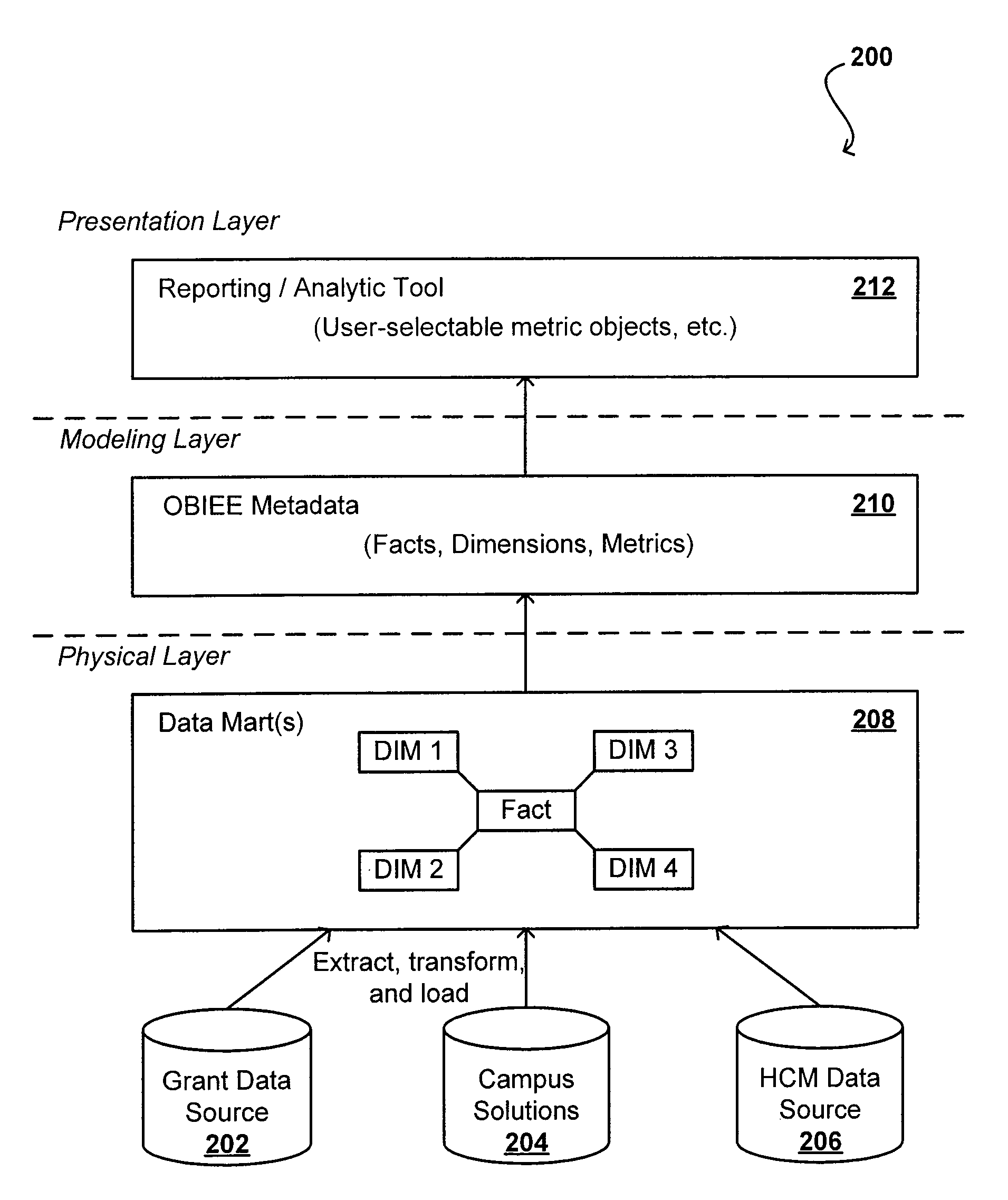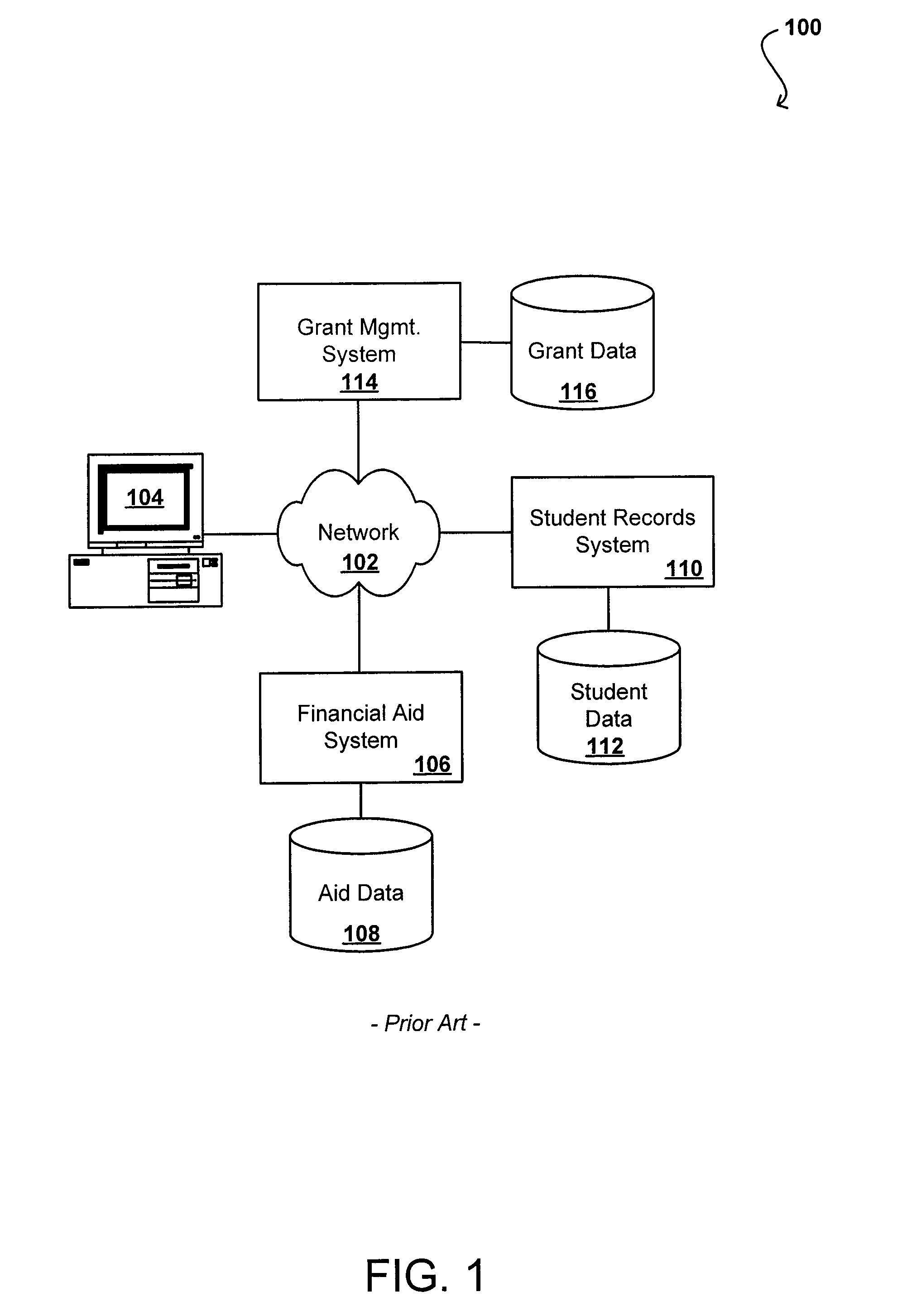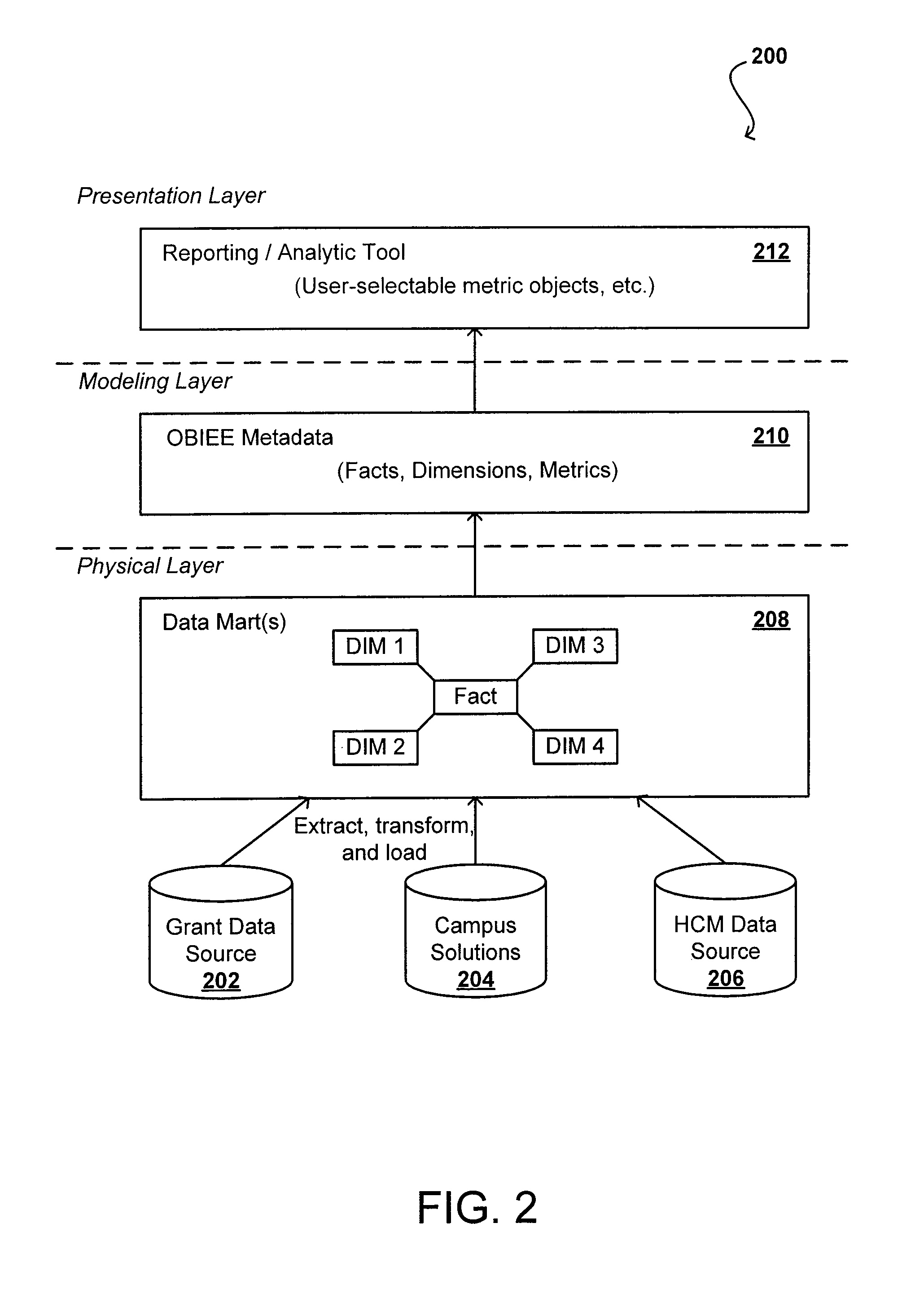Analytical reporting and data mart architecture for public organizations
a data mart and analytical reporting technology, applied in the field of data management, analysis, and reporting, can solve the problems of difficult for users to know which data to extract, no automatic generation of reports, and inability to obtain accurate overall picture across the entire data network, so as to achieve the effect of easy generation of reports
- Summary
- Abstract
- Description
- Claims
- Application Information
AI Technical Summary
Benefits of technology
Problems solved by technology
Method used
Image
Examples
Embodiment Construction
[0024]Systems and methods in accordance with various embodiments can overcome the aforementioned and other deficiencies in asset management and tracking systems by providing an architecture and various metrics that allow users to easily generate reports by selecting specific reporting objects. Exemplary objects can be used in a presentation layer to automatically pull correlated data from at least one data mart storing data from various systems, such that a user can easily generate reports using network-wide data by selecting the desired objects. In one embodiment, this is as simple as dragging visual objects onto a report page and arranging the objects in an appropriate manner.
[0025]A common data model can be used that includes various analytics, and that can account for historical information. Transactional data can be pulled from the various data sources, which cannot otherwise communicate with each other, and can be stored in a data warehouse and appropriate data mart(s). The da...
PUM
 Login to View More
Login to View More Abstract
Description
Claims
Application Information
 Login to View More
Login to View More - R&D
- Intellectual Property
- Life Sciences
- Materials
- Tech Scout
- Unparalleled Data Quality
- Higher Quality Content
- 60% Fewer Hallucinations
Browse by: Latest US Patents, China's latest patents, Technical Efficacy Thesaurus, Application Domain, Technology Topic, Popular Technical Reports.
© 2025 PatSnap. All rights reserved.Legal|Privacy policy|Modern Slavery Act Transparency Statement|Sitemap|About US| Contact US: help@patsnap.com



